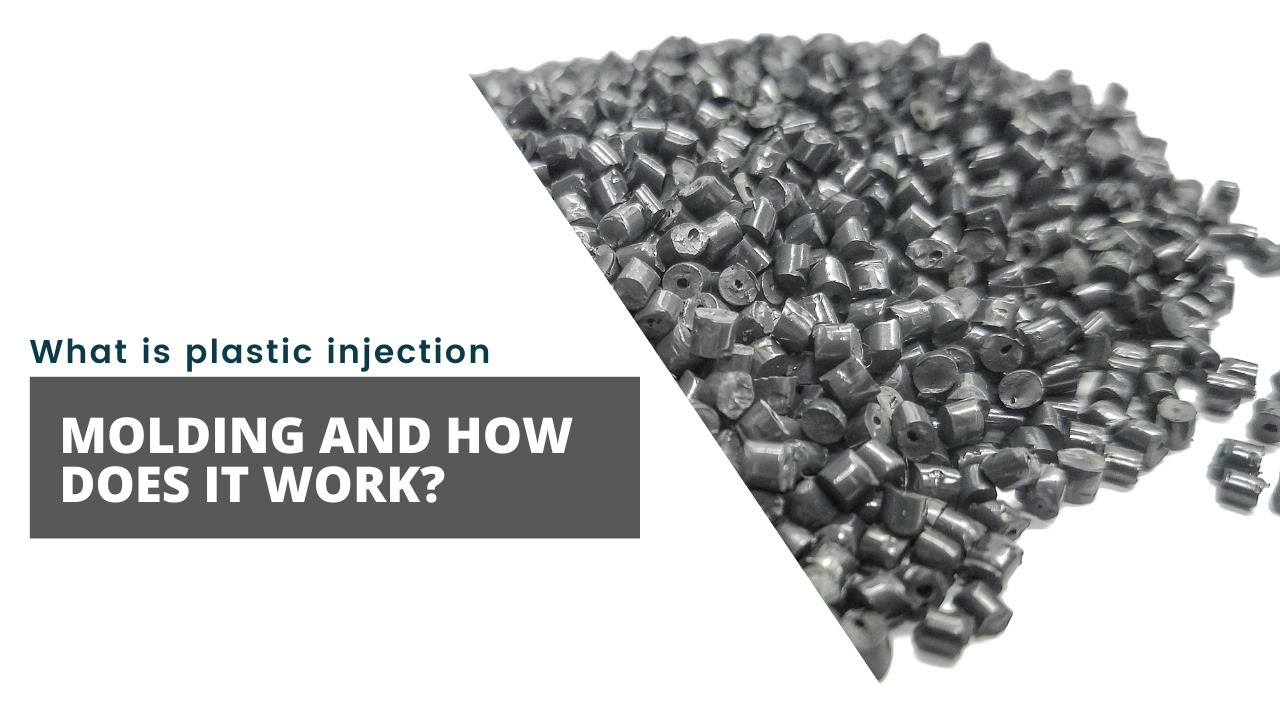Plastic injection molding is a manufacturing process that uses plastic pellets or granules as the raw material. These pellets are heated and then injected into a mold, where they are cooled and solidified. This process can be used to produce a wide variety of products, including food containers, automotive parts, and medical devices.
Table of Contents
What is Injection Molding?
Ever wonerded what is Injection Molding? Injection molding is the process of creating molded products by injecting molten material into a mold cavity. This cavity is usually in the shape of the desired final product but can be in the form of a temporary prototype or “mold” to be used in subsequent production runs.
In either case, once the molten material has cooled and solidified inside the mold, it can be removed and the process repeated as necessary to produce more molded products.
The material used in injection molding is typically a plastic or polymer, although other materials such as metals and glass can also be molded using this method.
The advantage of plastic injection molding is that it allows for the mass production of complex products with a high degree of accuracy and repeatability. In addition, the process is relatively fast and can be automated to some extent, which further reduces costs.
How Does Injection Molding Work?
Injection molding typically begins with pellets or granules of raw material, which are fed into a hopper and heated until they reach a molten state.
The molten material is then injected into a mold cavity under high pressure, where it cools and solidifies to take on the shape of the cavity. Once the molded product has cooled, it can be removed from the mold, and the process repeated as necessary.
The main advantage of injection molding is that it allows for the mass production of complex products with a high degree of accuracy and repeatability. In addition, the process is relatively fast and can be automated to some extent, which further reduces costs.
Disadvantages of Injection Molding
There are a few disadvantages associated with injection molding, as well. One is that the initial investment in equipment and tooling can be relatively high. In addition, the process requires a certain amount of expertise and experience to be done properly, which can add to costs.
Finally, injection molding is not well suited for small-scale production runs, as the setup time and per-unit costs tend to be higher than with other manufacturing methods.
Despite these disadvantages, injection molding remains one of the most popular manufacturing methods due to its versatility and efficiency.
It is used across a wide range of industries to produce products ranging from food containers to automotive parts to medical parts and devices. With the help of modern technology, injection molding can be used to create just about any type of product imaginable.
If you’re looking for a manufacturing method that can produce high-quality, complex products quickly and efficiently, injection molding may be the right choice for you. However, it’s important to keep in mind the potential disadvantages of the process before making a decision.
With the help of an experienced partner, you can overcome these challenges and reap the benefits of this versatile manufacturing method.
What are the benefits of plastic injection molding?
Some benefits of plastic injection molding include:
- The process is relatively fast and can be automated to some extent, which further reduces costs.
- Injection molding allows for the mass production of complex products with a high degree of accuracy and repeatability.
- The process is relatively versatile and can be used to create a wide range of products.
- Injection molding can be done relatively quickly and efficiently.
- The process is relatively versatile and can be used to create a wide range of products.
- Injection molding can be done relatively quickly and efficiently.
- Injection molding is a popular manufacturing method due to its versatility and efficiency.
- In addition, the process requires a certain amount of expertise and experience to be done properly, which can add to costs.
What are the disadvantages of plastic injection molding?
Some disadvantages of plastic injection molding include:
- The initial investment in equipment and tooling can be relatively high.
- Injection molding is not well suited for small-scale production runs, as the setup time and per-unit costs tend to be higher than with other manufacturing methods.
- The process requires a certain amount of expertise and experience to be done properly, which can add to costs.
Is Injection Moulding Environmentally Friendly?
Injection molding can be quite resourced intensive, which raises the question of whether or not it is environmentally friendly.
The answer to this question is both yes and no. Injection molding can be quite resourced intensive, which raises the question of whether or not it is environmentally friendly plastics. The answer to this question is both yes and no.
On one hand, the process of injection molding creates a lot of waste material in the form of plastic pellets or scrap. On the other hand, however, injection molded products are often made from recycled materials, which helps offset the environmental impact of the manufacturing process.
In conclusion, injection molding is a popular manufacturing method that has many benefits, but also some disadvantages.
The process is fast, efficient, and versatile, but it can be quite resource-intensive. Injection molded products are often made from recycled materials, which helps offset the environmental impact of the manufacturing process.










